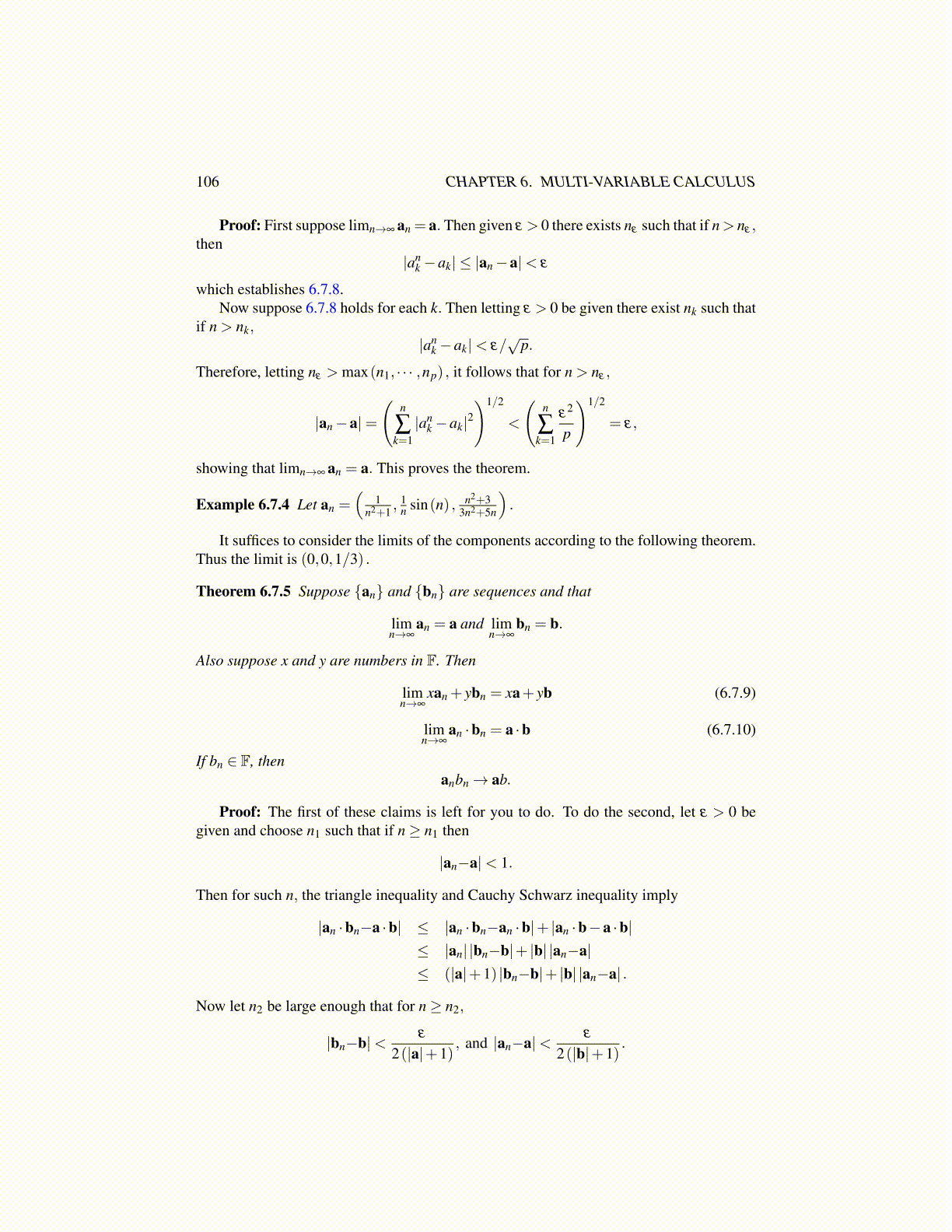
106 CHAPTER 6. MULTI-VARIABLE CALCULUS
Proof: First suppose limn→∞ an = a. Then given ε > 0 there exists nε such that if n> nε ,then
|ank−ak| ≤ |an−a|< ε
which establishes 6.7.8.Now suppose 6.7.8 holds for each k. Then letting ε > 0 be given there exist nk such that
if n > nk,|an
k−ak|< ε/√
p.
Therefore, letting nε > max(n1, · · · ,np) , it follows that for n > nε ,
|an−a|=
(n
∑k=1|an
k−ak|2)1/2
<
(n
∑k=1
ε2
p
)1/2
= ε,
showing that limn→∞ an = a. This proves the theorem.
Example 6.7.4 Let an =(
1n2+1 ,
1n sin(n) , n2+3
3n2+5n
).
It suffices to consider the limits of the components according to the following theorem.Thus the limit is (0,0,1/3) .
Theorem 6.7.5 Suppose {an} and {bn} are sequences and that
limn→∞
an = a and limn→∞
bn = b.
Also suppose x and y are numbers in F. Then
limn→∞
xan + ybn = xa+ yb (6.7.9)
limn→∞
an ·bn = a ·b (6.7.10)
If bn ∈ F, thenanbn→ ab.
Proof: The first of these claims is left for you to do. To do the second, let ε > 0 begiven and choose n1 such that if n≥ n1 then
|an−a|< 1.
Then for such n, the triangle inequality and Cauchy Schwarz inequality imply
|an ·bn−a ·b| ≤ |an ·bn−an ·b|+ |an ·b−a ·b|≤ |an| |bn−b|+ |b| |an−a|≤ (|a|+1) |bn−b|+ |b| |an−a| .
Now let n2 be large enough that for n≥ n2,
|bn−b|< ε
2(|a|+1), and |an−a|< ε
2(|b|+1).